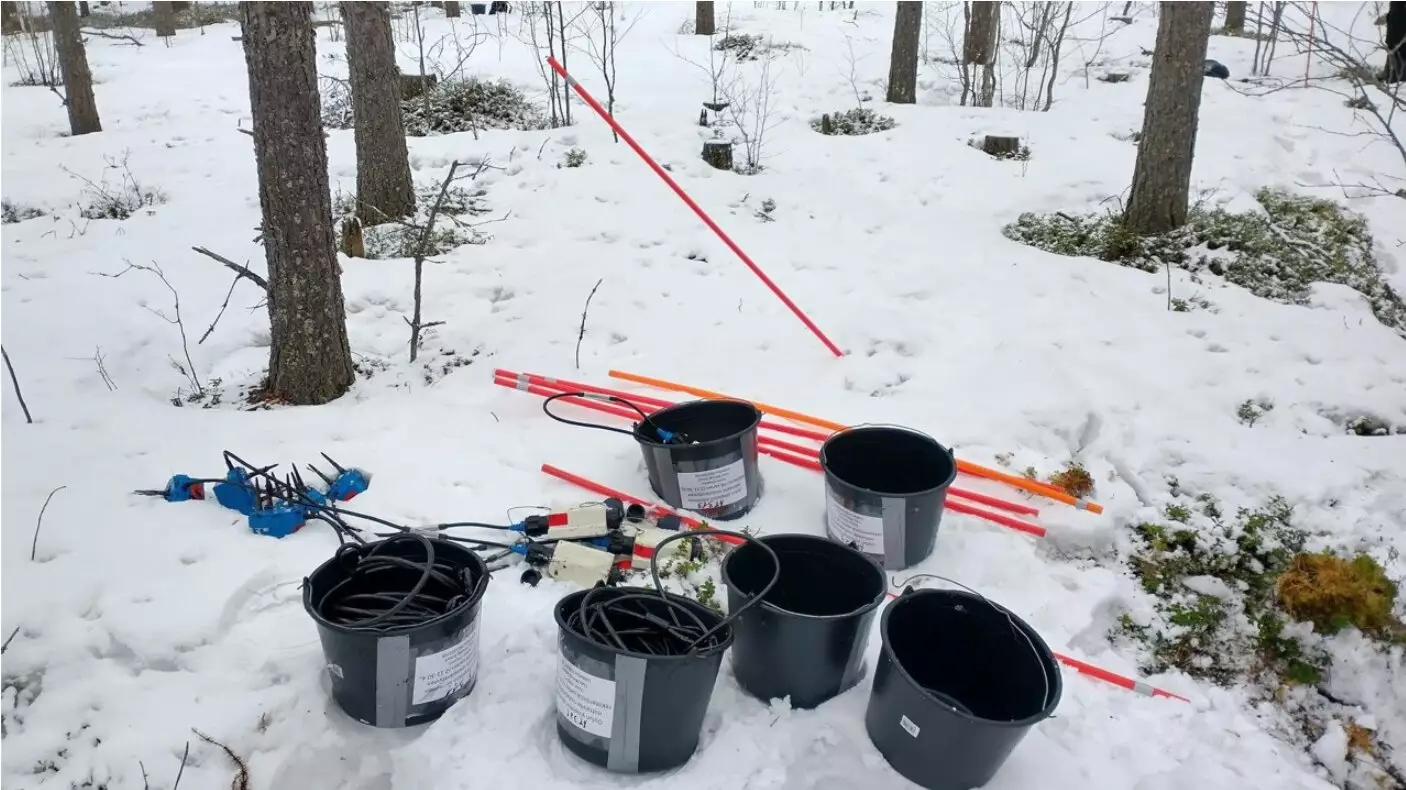

A new study has shed light on a potentially growing natural hazard in the northern regions: frostquakes. As climate change continues to contribute to extreme weather conditions, such as heavy precipitation and cold waves, these seismic events could become more common. Frostquakes are caused by the rapid freezing of water in the ground and are most prevalent during extreme winter conditions when wet, snow-free ground freezes rapidly. While it was previously believed that roads were the main areas from which frostquakes originated, the study revealed the unexpected importance of wetlands and drainage channels in the origin of these seismic events.
The study, conducted by researchers from the University of Oulu and the Geological Survey of Finland (GTK), focused on the city of Oulu in Finland. It found that during the winter of 2022-2023, the main sources of frostquakes in Oulu were swamps, wetlands, and areas with high water tables. Accumulated water from heavy rainfalls in autumn or melting snow during warm winter weather freezes and expands rapidly, causing cracks in the ground accompanied by tremors and booms. Previously, frostquakes were mainly observed in permafrost regions, but with the changing climate, wetland areas and drainage channels have also become vulnerable to these seismic events.
Frostquakes can have detrimental effects on infrastructure and buildings. The fractures caused by frostquakes can propagate deeper into the ground and damage roads, basements, pipelines, and buildings. The study highlighted the need to map and identify areas at risk of frostquakes to better prepare and protect the built environment from this specific natural hazard. The researchers emphasized the importance of further studies to determine the prevalence of frostquakes in other areas and develop a system for predicting them based on soil analysis and satellite data.
One of the key findings of the study was the surprising role of wetlands and drainage channels in the occurrence of frostquakes. Wetlands and areas with high water tables were identified as significant sources of these seismic events in Oulu. The rapid freezing and expansion of water in these regions led to the formation of cracks in the ground, accompanied by tremors and booms. This discovery highlights the importance of understanding the impact of wetlands and drainage channels on frostquake activity and the need for further research in this area.
Frostquakes are most likely to occur when the air temperature drops to below -20°C at a rate of about one degree per hour. The study recorded ground tremors and unusual sounds reported by local residents during several days of rapid temperature decrease. The seismic signals and soil temperature data collected during these events were used to identify frostquakes. The presence of wetlands and drainage channels close to the seismic stations in Oulu played a significant role in detecting and understanding the occurrence of frostquakes in the area.
While frostquakes have been recorded in two locations in Finland, there is a need for further research to determine their prevalence in other areas. The study concluded that precise mapping of frostquakes in different regions is crucial to assess the extent of this natural hazard. The researchers aim to develop a system that can predict frostquakes based on soil analysis and satellite data. This will help in identifying areas at risk and implementing measures to protect the built environment from the potential damage caused by these seismic events.
Frostquakes are a growing natural hazard in northern regions, and their occurrence could become more common with climate change. The study highlighted the surprising role of wetlands and drainage channels in the origin of frostquakes, which were previously believed to mainly originate from roads. It also emphasized the need for further research to better understand and predict frostquake activity. By mapping areas at risk and developing predictive systems, it will be possible to mitigate the impact of frostquakes and protect infrastructure from the damage caused by these seismic events.
Nitrogen, a fundamental element found in various forms, plays a crucial role in both agricultural…
For centuries, humans have been captivated by the enigma of chaotic systems, from the tumultuous…
The proliferation of synthetic polymers, particularly since the 1950s, has ushered in a double-edged sword.…
In a revealing study, researchers have turned their attention to an everyday indulgence: chewing gum.…
Neptune, the enigmatic azure giant of our Solar System, has long tantalized astronomers with its…
In an era where environmental degradation and climate change are pressing concerns, the quest for…
This website uses cookies.